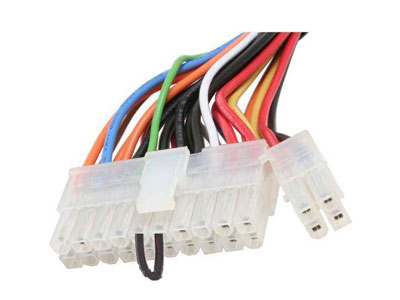Key Takeaway
To make a dual power supply, you need a center-tapped transformer (220V/12V), a full-bridge rectifier, and capacitors.
First, connect the center-tapped transformer to convert 220V AC into 12V AC. Ensure the center tap is grounded.
Next, use the full-bridge rectifier to convert 12V AC to 12V DC. Connect the transformer’s output to the rectifier’s input.
Finally, smooth the DC output by adding capacitors across the positive and negative terminals. This stabilizes the voltage.
Now, you have a dual power supply providing +12V and -12V DC. This setup is useful for many electronic projects requiring stable dual voltages.
Required Components and Tools
To build a dual power supply, you need two transformers, two bridge rectifiers, filter capacitors, voltage regulators, resistors, diodes, and a PCB for assembly. Essential tools include a soldering iron, multimeter, wire cutters, and a screwdriver. Ensure a clear workspace and organize components before starting. This preparation avoids mistakes and ensures smooth assembly. Having datasheets for each component is beneficial, providing crucial information like pin configurations and electrical characteristics. Gathering all necessary components and tools beforehand saves time, reduces errors, and contributes to the project’s overall efficiency and safety.

Step-by-Step Assembly Guide
Begin by mounting the transformers on the PCB. Secure them firmly to ensure stability. Next, connect the primary windings of the transformers to the AC mains supply. Be cautious while handling AC connections to prevent any accidental shocks. This step is crucial as it ensures the transformers are correctly positioned and securely attached, providing a stable foundation for the rest of the assembly.
Now, wire the secondary windings to the bridge rectifiers. This converts the AC voltage to DC. Following this, connect the filter capacitors to the output of the rectifiers to smooth out the DC voltage. Ensure the capacitors are correctly oriented to avoid damage. Correct orientation is vital as incorrect positioning can lead to capacitor failure and circuit malfunction.
After the capacitors, connect the voltage regulators. They will stabilize the voltage output. Wire the positive and negative outputs from each regulator to form the dual power supply. Finally, double-check all connections for accuracy and secure any loose wires. This careful assembly ensures the dual power supply operates efficiently and safely, providing reliable power for your industrial applications.
Safety Precautions
Safety is paramount when working with electrical components. Always disconnect the power supply before making any adjustments. Use insulated tools to prevent electrical shocks. Wearing safety goggles and gloves provides additional protection, ensuring a safe working environment and minimizing the risk of injury.
Verify the voltage ratings of your components. Using components with incorrect ratings can cause failures and pose significant safety risks. Proper ventilation is also crucial to avoid overheating, which can damage components and create fire hazards. Overheating can severely impact the reliability and lifespan of your power supply, leading to potential malfunctions.
Regularly inspect your setup for any signs of wear or damage. Damaged components should be replaced immediately to maintain safety. Following these precautions not only ensures your safety but also enhances the longevity and reliability of your dual power supply. Consistent maintenance and vigilance are key to preventing accidents and ensuring optimal performance. Keeping your workspace organized and your components well-maintained contributes to a safer and more efficient working environment, ultimately protecting both you and your equipment.
Testing and Troubleshooting
Once assembled, it’s vital to test your dual power supply thoroughly. Start by measuring the output voltages using a multimeter. Ensure the readings match the expected values for both positive and negative outputs. Any deviation might indicate an issue with the assembly or components. Accurate testing is essential to confirm the correct operation of your power supply.
If you encounter any issues, recheck your connections. Common problems include loose wires, incorrect component orientation, or faulty solder joints. Identifying and fixing these issues early prevents potential damage and ensures your power supply operates correctly. Troubleshooting is a critical step to ensure reliability and functionality.
Testing under load conditions is also recommended. Connect a suitable load to the outputs and monitor the voltage stability. This step confirms that your power supply can handle real-world applications without significant voltage drops or overheating. Real-world testing ensures your power supply is ready for industrial use, providing consistent and reliable performance.
Practical Applications
A dual power supply is versatile and can be used in various industrial applications. It’s essential for testing and repairing electronic circuits, providing both positive and negative voltages required by many analog and digital devices. This makes it invaluable in laboratories and manufacturing applications where precision and reliability are crucial.
It’s also used in operational amplifier circuits, which are common in signal processing and instrumentation. The dual supply ensures these amplifiers operate correctly, improving the performance and accuracy of your systems. Proper voltage supply enhances the functionality of these circuits, leading to better overall system performance.
In addition, it’s beneficial for powering sensors and transducers that require dual voltages. This capability enhances the functionality and reliability of industrial automation systems, making your processes more efficient and effective. A reliable dual power supply is fundamental for maintaining the smooth operation of your automation systems, ensuring productivity and safety in industrial environments.
Conclusion
Creating a dual power supply is a rewarding project that enhances your understanding of electrical components and circuits. By carefully selecting and assembling the necessary components, you can build a reliable and efficient power supply for various applications.
Following safety precautions is crucial to prevent accidents and ensure the longevity of your device. Thorough testing and troubleshooting help identify and resolve any issues, ensuring your power supply operates as intended.
With practical applications in testing, repair, and industrial automation, a dual power supply is a valuable addition to your toolkit. This project not only enhances your technical skills but also provides a reliable power source for a wide range of electronic devices.
